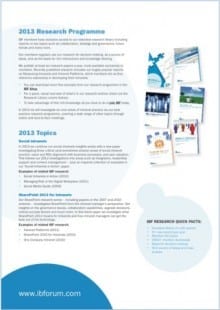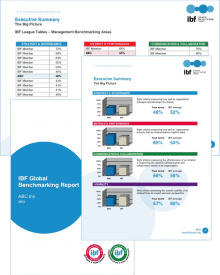Applying the scientific method to the digital workplace and employee experience

Intranet and digital workplace initiatives have long suffered from a lack of research and testing, as well as the expensive “big-bang” approach to improvements. We can reduce the high cost and frequent failure of these approaches by applying the scientific method and concepts from The Lean Startup.
The scientific method is messy and full of surprises
My sister started to smile wider and wider as she listened to me reading to my two young daughters. The book was Ada Twist, Scientist and it describes a little girl exploring the world through rigorous hypothesizing and testing. Young children are actually tremendous scientists, constantly testing how the world works, including their parents’ reactions to their behaviour.
In this book, young Ada makes mistakes, goes down the wrong path, starts over and keeps testing with tremendous determination. “I love it!” said my sister. “Most kids today learn a skewed, simplistic version of the scientific method. They don’t understand that science is a messy process, full of failure and wrong hypotheses.”
You see, my sister is a scientist and teacher. She teaches astronomy and chemistry, and develops modern STEM curricula that utilize current technology, the latest in our scientific understanding and effective learning strategies. So when she heard this cool children’s book accurately describing the zigzagging path of scientific discovery, she couldn’t help but feel elated.
The scientific method, employee experience and The Lean Startup
This explanation of science as a messy process that requires a permanent cycle of hypothesizing, testing and measurement also applies to the digital workplace and employee experience in a powerful way.
I’ve written elsewhere about the need to transition intranet projects into programmes and how ongoing user experience testing and measurement are at the heart of employee experience design. The case for this only grows in today’s rapidly changing markets and technology landscapes.
The world of business strategy, startups, product development and marketing has taken a leap towards the scientific method via concepts like The Lean Startup. This great blog post and diagram about the real value of learning in agile product development uses scientific imagery that makes tons of sense.
These ideas seem to be working and have gained traction as THE right approach for building startups. But are we applying these concepts to the digital workplace? The short answer: mostly no.
Underinvestment and short-term thinking in the digital workplace
Most organizations underinvest in digital workplaces and employee experience.
Internal communications, intranets, employee social networking, digital workplace strategy and employee experience work don’t fit clearly within traditional operational silos (Marketing, HR, IT, etc.). Often, either nobody really owns these things, or ownership bounces around between HR, IT and Marketing. In that environment, long-term strategies get thrown out of the window.
Many companies try to take a “set it and forget it” approach to intranets, enterprise community platforms and other tools. And this almost always fails.
The key to delivering value around internal communications, the digital workplace and employee experience is to treat these things as ongoing programmes. A product management approach based on regular hypothesizing, user testing and measurement, lets us iterate and learn rapidly. This is at odds with the big-bang approach to launching intranets and enterprise social software.
The standard approach: big-bang projects with a lack of research and testing
Most intranet projects come about due to a period of underinvestment and neglect. Then we decide a new platform and new design will solve all our problems, so we implement an 18-month project to build a new thing. Then we start to neglect it again.
The same often happens with enterprise social networking (ESN) platforms and internal communications channels and campaigns. We invest a ton of time and money to implement big projects without creating minimum viable products (MVPs) to test our assumptions.
We also lack the necessary user research and testing to ensure we’re delivering what employees need, in the way that they need it. In a recent article, James Robertson explained how employee research should inform strategy to make sure digital workplace initiatives solve the right problems. Similarly, virtually every Digital Workplace Group (DWG) consulting project begins with focused research.
So, if we want to spend our limited digital workplace and internal communications funds wisely, we need to look at agile approaches that start small and help us discern if we’re going in the right direction.
Applying the scientific method to the digital workplace
In order to apply the scientific method successfully in the digital workplace, we need to implement two fundamental practices: 1) Build an employee user experience programme with a product management mindset; and 2) develop a strong metrics framework for intranets, the broader digital workplace, internal communications and employee experience overall.
At the heart of product management thinking sits the concept of “problem spaces”, which helps us to see the broader employee experience rather than just one tool. Instead of thinking just about the products, technology or platforms, we need to understand a problem space, the full surrounding context, and a variety of solutions.
In the traditional “platform” view, the problem is an old intranet where the tech is old or the design is antiquated. Either way, the solution is to launch a new platform or at least a new design.
Through the “problem space” lens we extricate our thinking from the technology a bit and identify problems and related goals more holistically. Then we can identify improvements on our existing platforms, and likely across several platforms, mediums and departments, that address the problem space iteratively. This approach requires programmatic thinking and an employee experience perspective that includes, but isn’t limited to, the platforms at hand.
Product management and problem space thinking include these types of step:
- Identify the problem space
- Conduct research and testing
- Create a hypothesis
- Set a baseline
- Identify possible solutions
- Implement the MVP based on the solution with the highest impact-to-cost ratio
- Collect data and conduct testing
- Update hypothesis
- Build on what seems to be working or try something different
- Collect data and conduct testing
- Repeat, for ever
The scientific method in internal communications and the digital workplace
The first step in bringing the scientific method to internal communications and the digital workplace is to make explicit our assumptions about the impact on business outcomes.
For example, if we want to implement an executive blog, why are we doing so? What do we think the business outcome will be? What are our assumptions about why we’ll see that change?
I assume we’re starting an executive blog for a couple of reasons: 1) To build trust in and connection to executives in order to drive employee engagement; 2) to increase employees’ understanding of business strategy, priorities and goals, so they better align their efforts.
If these are our assumptions, we need to create relevant metrics. For #2 above, we can ask employees who read the executive blog: “How well do you think you understand our strategy?” and “What changes have you made to your work to better align with our strategy?” If we compare the responses to these questions, as well as business performance metrics for those teams, with those for teams that don’t engage with the executive blog, we should have a decent amount of data about the business impact of our work.
Similarly, if we want to update the intranet home page, for example, we have to start by articulating the assumptions behind the need. Then we can interview employees about their intranet use and conduct observational research and testing. This may reveal insights related to employee needs that we never could uncover otherwise.
For example, I once conducted observational task testing with employees and discovered that they were searching their email for past HR messages rather than going to the intranet. While this indicated super-low trust for the intranet, it also provided another insight: to search-optimize HR emails with keywords. That’s a short-term fix which can provide value in the immediate term, and from which we can learn in order to improve the intranet over time.
Agile as a cost–effectiveness imperative, not just a buzzword
The scientific method is, at its heart, agile. The book, The Lean Startup, even references its agile approach as being based on the scientific method.
Applying the scientific method to employee experience, the digital workplace, intranet design, internal communications and more is not just a trend; it’s an intentional approach that can save time and money and address the long-time challenges digital workplaces face.
I encourage everyone out there who works on employee experience (which I see as including internal comms, HR, intranets, employee social networking, the broader digital workplace, and more) to ask a few key questions:
- How can we apply an agile, scientifically methodical approach to our work?
- How can we better articulate our assumptions and hypotheses?
- How can we do more user research with employees to better understand their real needs?
- How can we find small ways to test our assumptions and prove value?
- How can we create a programme of iterative improvement, based on ongoing data and feedback?
The scientific method isn’t the only answer to our digital workplace questions, but it sure can help.
RESEARCH AND RESOURCES
- BLOG: Five steps toward setting up a digital workplace user experience programme
- BLOG: Measuring the digital workplace
- PODCAST: How to measure a digital workplace
- FREE EXECUTIVE SUMMARY: The changing role of Internal Communications
- FREE EXECUTIVE SUMMARY: Evidence-based intranet success
TAKE THE NEXT STEP
Find out how usable
your intranet is via benchmarking
Categorised in: Digital employee experience


